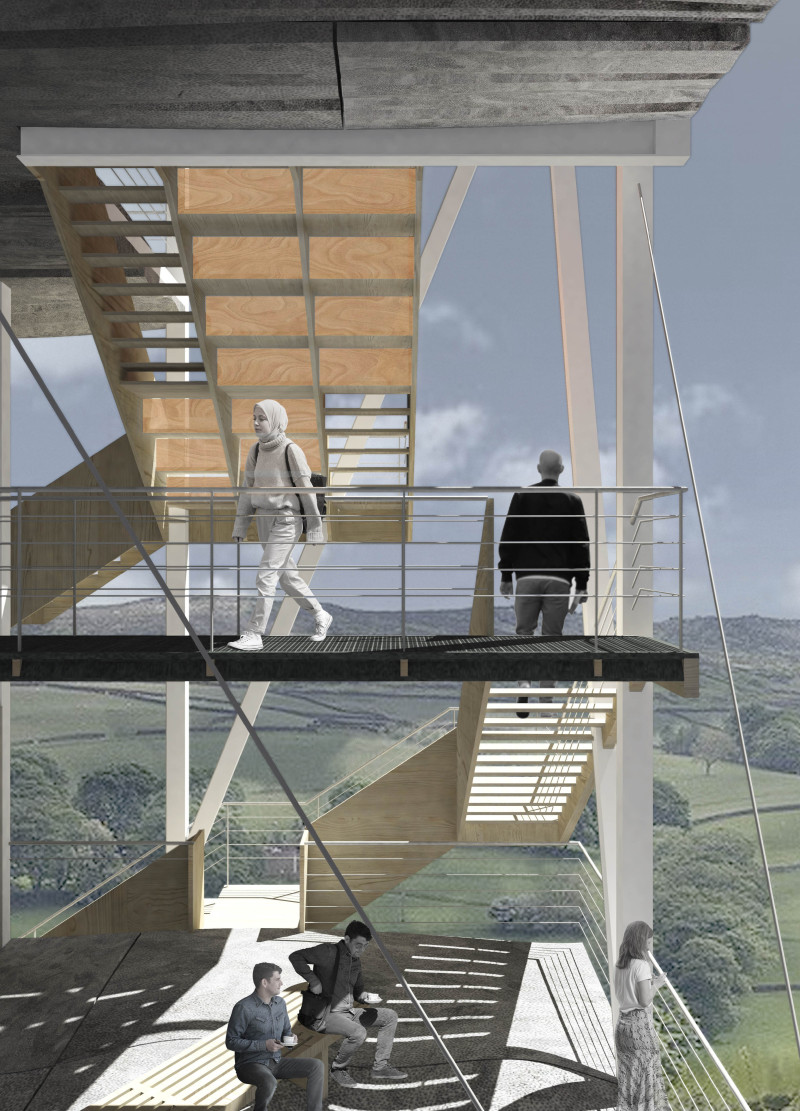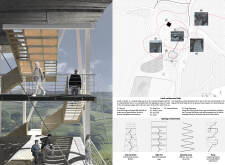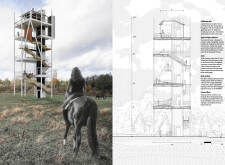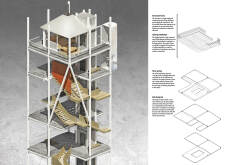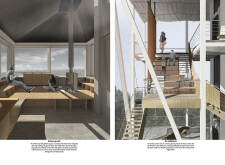5 key facts about this project
Set in the diverse landscapes of North Vidzeme, Latvia, the design integrates a trail and an observatory, inviting exploration and interaction with nature. The main idea focuses on a journey through different environments, allowing visitors to connect with the land and enjoy their surroundings. The project encourages sensory experiences as people walk through the various ecological zones.
The Trail
The trail is a central feature that leads individuals through contrasting ground textures and ecosystems, including farmland, forests, plains, and swamps. As visitors meander along the pathway, they experience a sense of adventure and discovery. Each step offers a new view and a different feel of the land, enhancing engagement with the natural world.
Kurgi Observatory
The observatory functions as both a lookout point and a space for curiosity. It rises to 31.7 meters, designed to enhance the visitor experience with its dynamic circulation and varied floor textures. The height of the structure provides expansive views of the surrounding terrain. As visitors ascend, the upper levels offer a compressed panorama, creating a unique relationship between the built environment and the wide-open landscape.
Gathering Spaces
In addition to the observatory, gathering spaces play a vital role in encouraging social interaction. One such space is a gathering hut, accessed by a spiral staircase. This area is covered and offers comfort for groups to meet. The adjacent peripheral veranda serves as a transition zone, balancing public engagement with the need for quiet moments of reflection.
Materiality and Structure
Materials used in the design include sand-cast prefabricated concrete for the floors and ceilings, ensuring strength and a connection to the natural environment. The lightweight skeletal structure allows the observatory to blend into the landscape. The ceiling features suspended sand-mixed plaster that highlights natural shapes, reinforcing the bond between architecture and its setting.
Overall, the careful arrangement of space, structure, and nature creates an environment that fosters a deeper appreciation of the surroundings, allowing for meaningful experiences and connections as people explore the landscape.


